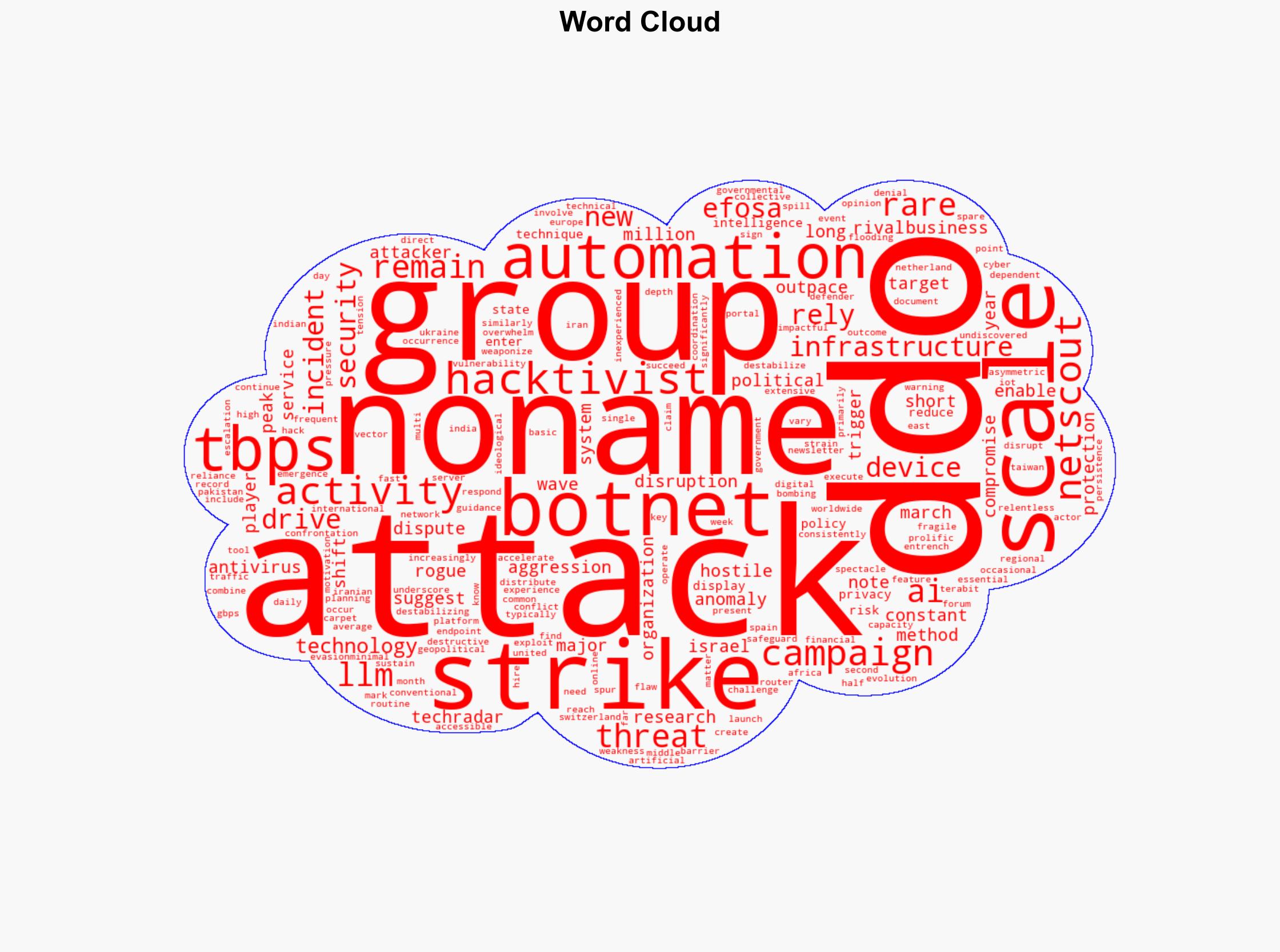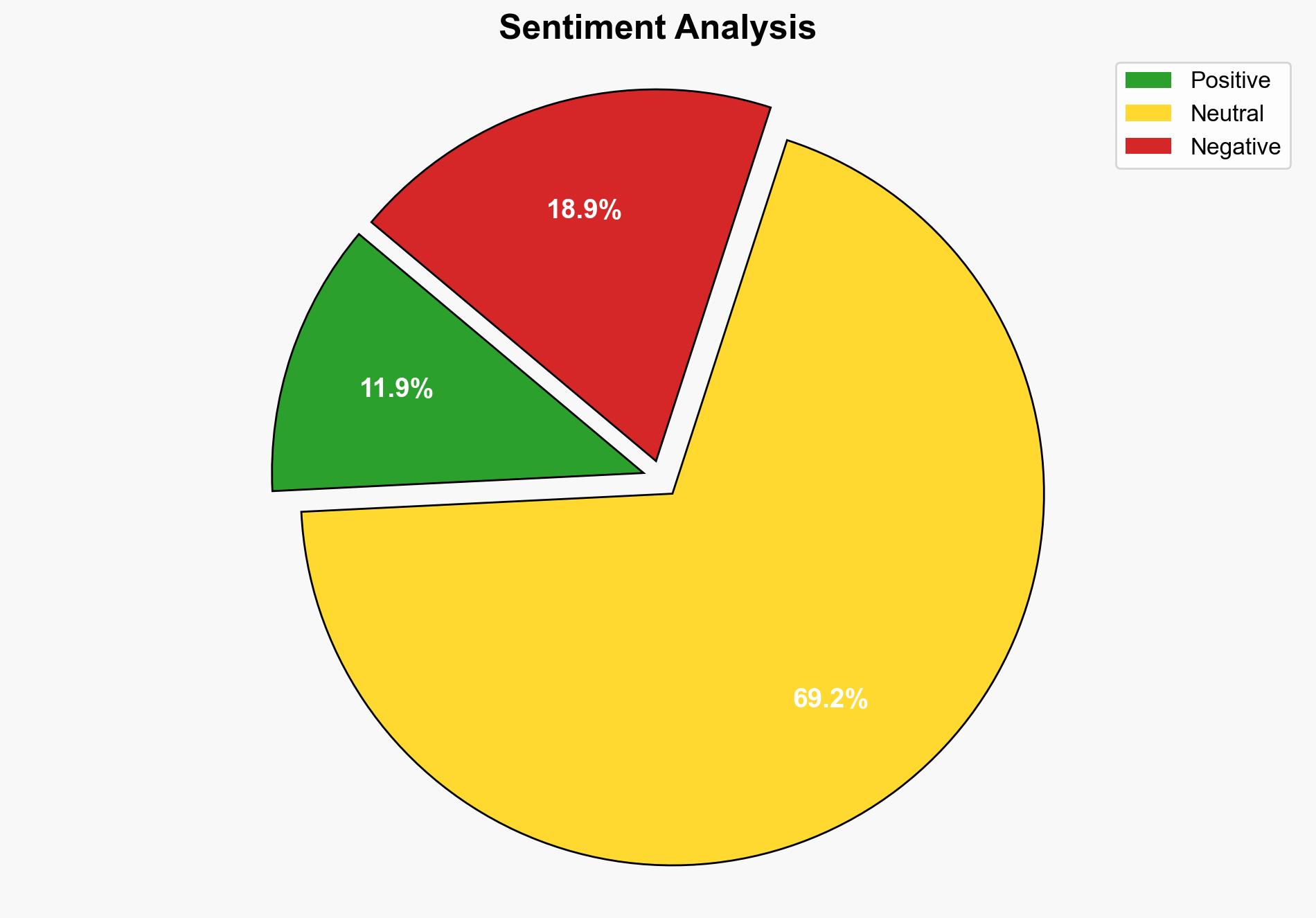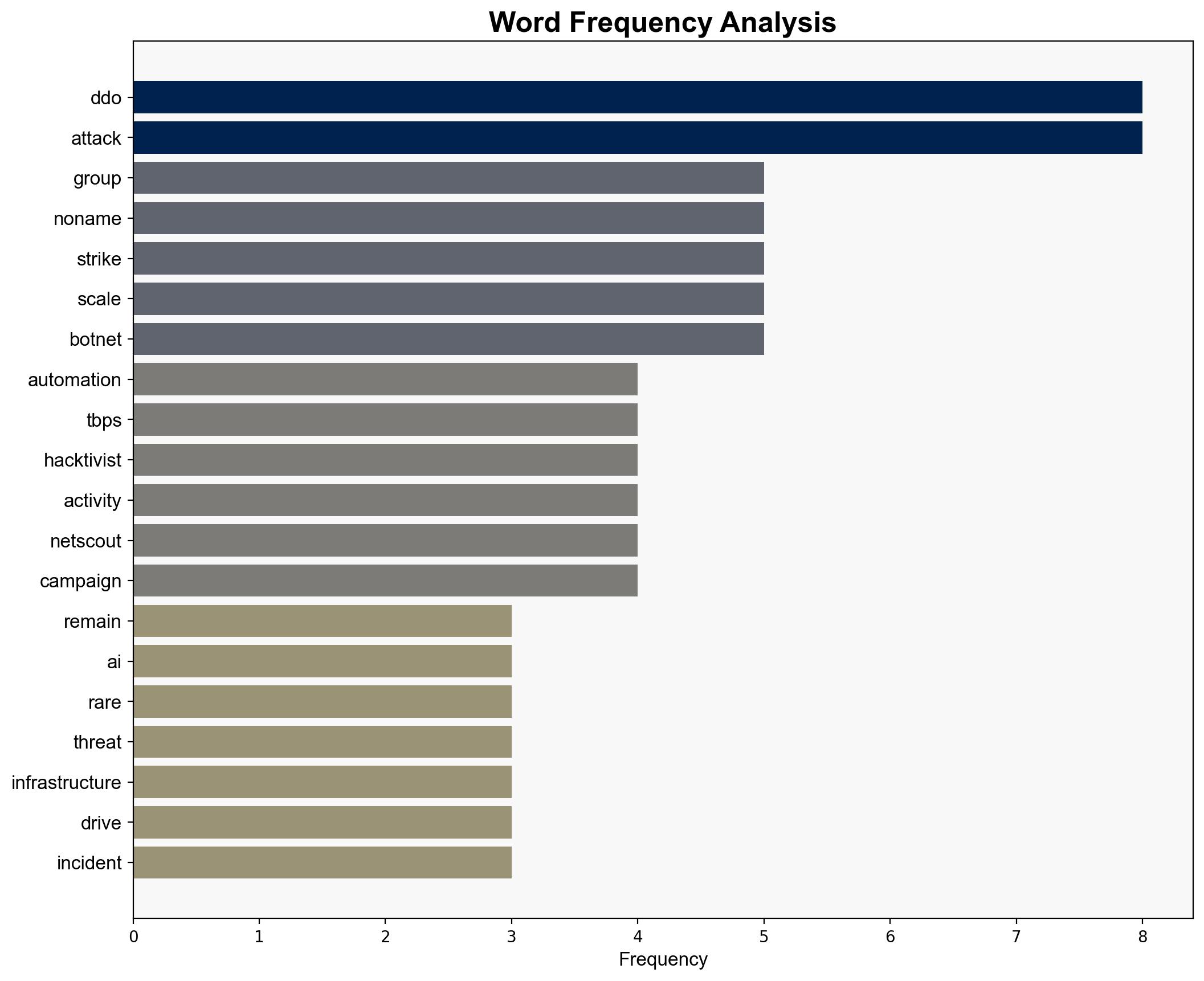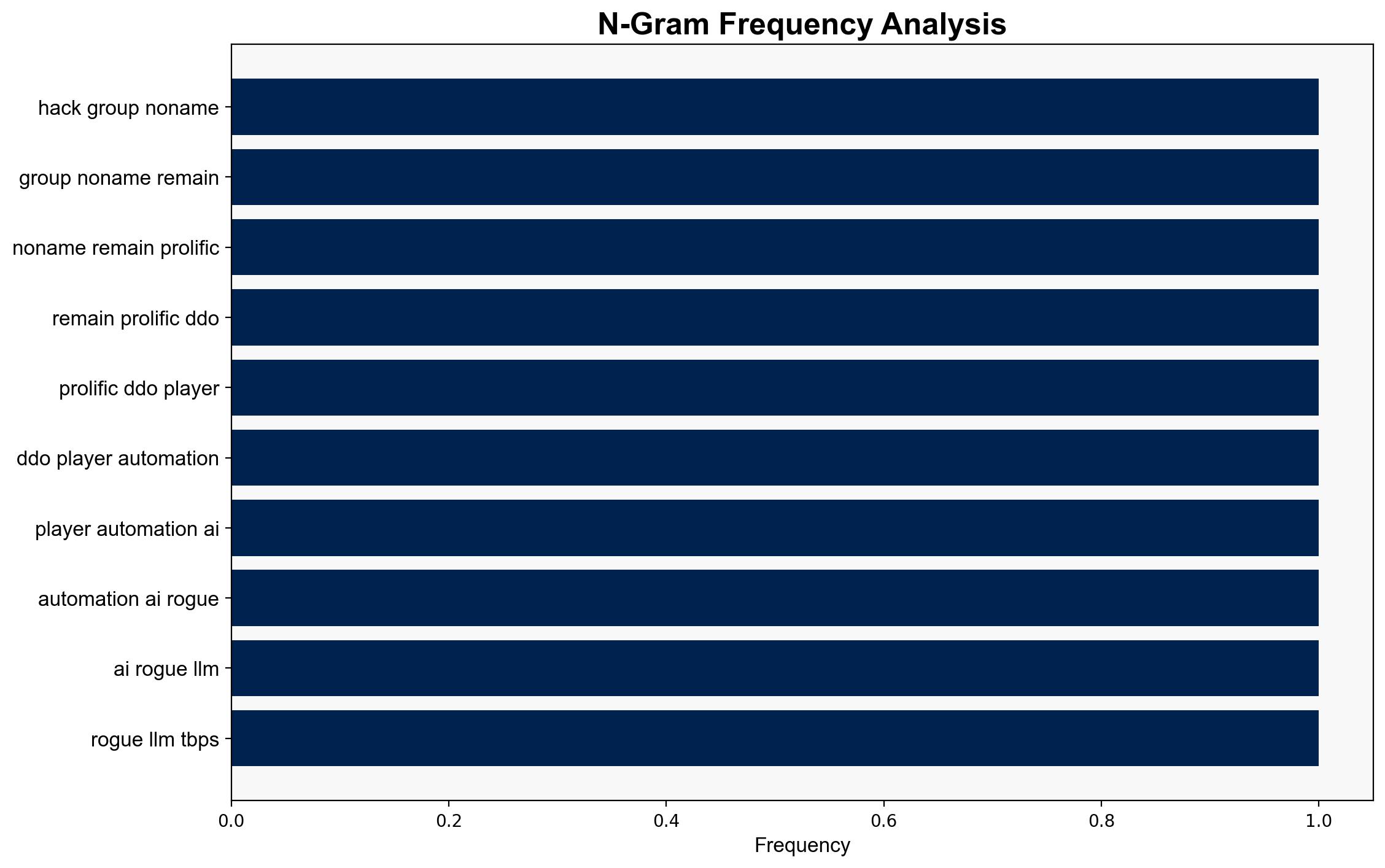Hacking group NoName05716 remains the most prolific DDoS player as automation AI and rogue LLMs make Tbps attacks a common occurrence – TechRadar
Published on: 2025-08-27
Intelligence Report: Hacking group NoName05716 remains the most prolific DDoS player as automation AI and rogue LLMs make Tbps attacks a common occurrence – TechRadar
1. BLUF (Bottom Line Up Front)
The hacking group NoName05716 is leveraging advanced automation and rogue AI technologies to execute large-scale DDoS attacks, posing a significant and persistent threat to global cybersecurity. The most supported hypothesis is that geopolitical tensions are the primary driver of these attacks, with a high confidence level. It is recommended to enhance international cybersecurity collaboration and invest in AI-driven defensive measures.
2. Competing Hypotheses
1. **Geopolitical Tensions as Primary Driver**: NoName05716’s activities are primarily motivated by geopolitical conflicts, using DDoS attacks as a tool to destabilize political adversaries and influence international relations.
2. **Technological Opportunism**: The group is exploiting technological advancements in AI and automation to conduct DDoS attacks, driven by opportunistic motivations rather than specific geopolitical agendas.
Using the Analysis of Competing Hypotheses (ACH) 2.0, the first hypothesis is better supported by the evidence of targeted attacks on government portals in politically sensitive regions such as Spain, Taiwan, and Ukraine, as well as the involvement in conflicts like India-Pakistan and Iran-Israel.
3. Key Assumptions and Red Flags
– **Assumptions**: It is assumed that NoName05716 has the capability and intent to sustain high-frequency, high-impact attacks due to geopolitical motivations. Another assumption is that rogue AI and LLMs significantly lower the barrier for executing complex attacks.
– **Red Flags**: The potential underestimation of the group’s adaptability and the evolving nature of their tactics. There is also a lack of detailed attribution data linking specific attacks to geopolitical events.
4. Implications and Strategic Risks
The persistent threat of Tbps-scale DDoS attacks could destabilize critical infrastructure, leading to economic disruptions and heightened geopolitical tensions. The increasing accessibility of AI-driven attack tools may democratize cyber aggression, enabling less sophisticated actors to launch significant attacks. This scenario poses a risk of escalation in cyber warfare, potentially triggering retaliatory measures and broader conflicts.
5. Recommendations and Outlook
- Enhance international cooperation on cybersecurity to share intelligence and develop joint defense strategies.
- Invest in AI-driven defensive technologies to detect and mitigate DDoS attacks in real-time.
- Scenario Projections:
- Best: Successful international collaboration reduces the frequency and impact of DDoS attacks.
- Worst: Escalation of cyber warfare leads to significant geopolitical instability.
- Most Likely: Continued sporadic high-impact attacks with gradual improvements in defensive capabilities.
6. Key Individuals and Entities
No specific individuals are mentioned. The focus is on the hacking group NoName05716 and emerging players like Dienet and Keymous.
7. Thematic Tags
national security threats, cybersecurity, counter-terrorism, regional focus





